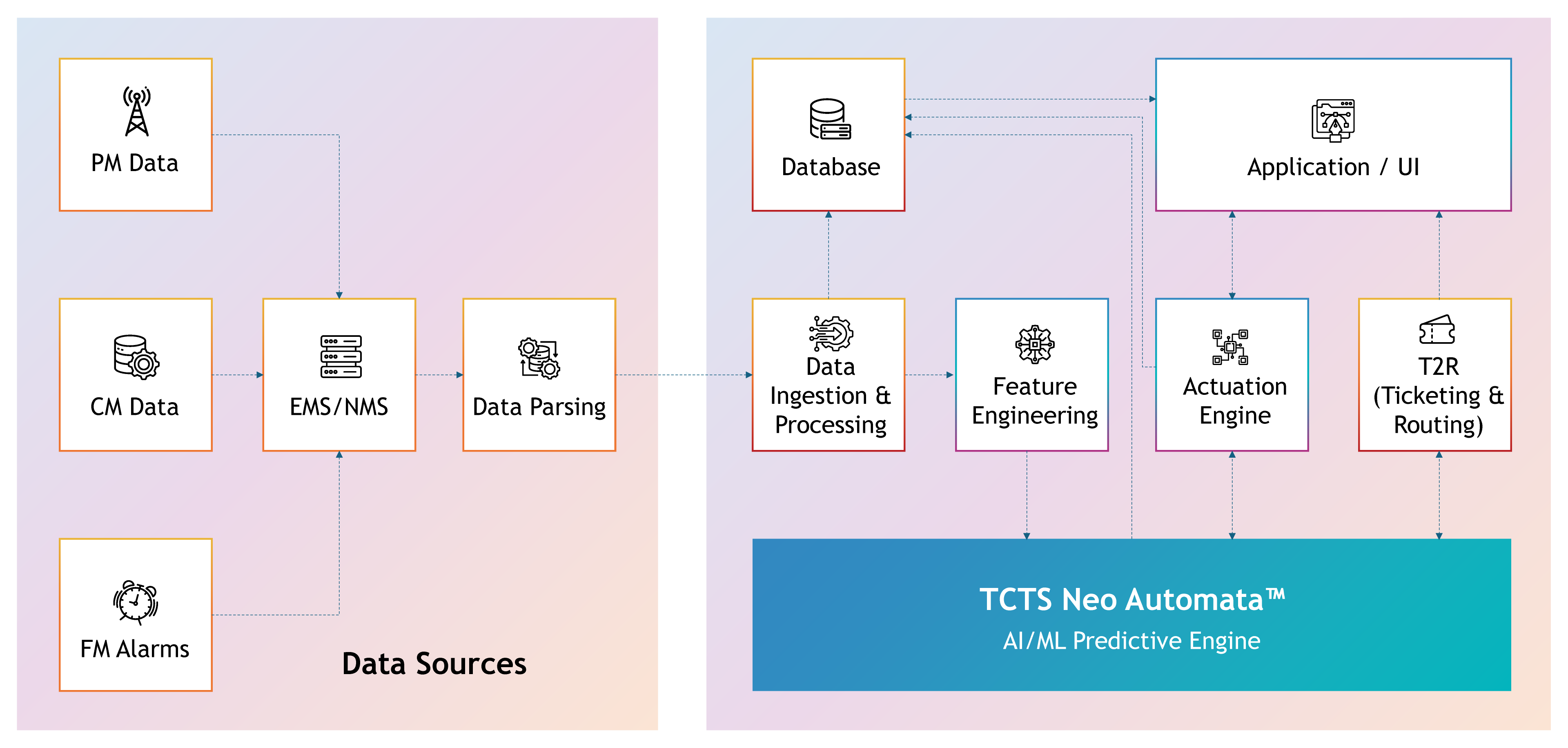Overview
As mobile networks evolve, ensuring seamless user accessibility remains a foundational requirement for customer experience. Yet, networks often suffer from “in-service” cells that silently fail to serve users, resulting in dropped sessions, delayed service access, and degraded Quality of Service (QoS).
TCTS has developed a predictive AI/ML-powered solution to proactively detect, diagnose, and heal accessibility issues across RAN. This solution ensures that every cell in the network contributes optimally to service delivery.
The Situation
Accessibility Sometimes Goes Unnoticed in Traditional Monitoring Systems
Despite cells appearing operational within OSS and network management systems, certain anomalies can prevent users from successfully accessing services. The following issues often go overlooked in traditional rule-based monitoring:
- Cells showing zero or abnormally low traffic despite being marked “On-Air”
- High failure rates in RRC or PDU session setups
- Inactive QoS bearers or Data Radio Bearers (DRBs)
- PCI conflicts or outdated neighbour lists
Such faults, if undetected, lead to user churn, increased support costs, and underutilized infrastructure investments.
The Resolution
Enhancing RAN Utilization and Uptime through AI-Based Closed-loop Solution
TCTS’s AI-based predictive engine is built on a vendor-agnostic, multi-layered architecture that ingests real-time telemetry including PM counters, UE traces, MDT reports, and configuration audits. Key layers include:
- Data Ingestion & Normalization: Standardizes inputs across all mobility nodes
- Feature Engineering: Derives KPIs like Initial E-RAB Success Rate and PDU Session Setup Success Rate
- Anomaly Detection Models: Utilizes supervised and unsupervised algorithms (such as Random Forest, XGBoost, Autoencoders, and more) to highlight cells with degraded accessibility
- Severity Scoring: Applies classification logic to rank issues by their impact on customer experience

Fig: TCTS Neo Automata™ for network performance management
(By integrating network data, the system proactively detects inactive or degraded cells before they impact service, enabling seamless accessibility through intelligent routing)
To detect and isolate cell accessibility issues across different layers, the architecture performs real-time correlation of accessibility KPIs, configuration audits, and alarm telemetry. It identifies both transient and persistent faults caused by:
- Poor RF Coverage (e.g., low RS/SS-RSRP/RSRQ levels)
- High UL Interference leading to RACH failure or decoding errors
- PCI Conflicts impacting UE synchronization and access
- Excessive Load or Congestion, affecting RRC and session setup success
- Incorrect RACH Root Sequence Index (RSI) planning, leading to preamble collisions
- UE camping on incorrect or barred cells due to missing/misconfigured neighbour or reselection parameters
- Incorrect System Information Broadcast (SIB) constants, barring access or causing attach failures
- QIA (quality impacting alarm) analysis for ongoing site issues
- Persistent alarms – such as Cell Unavailable, Transport Faults, Power Failures – can affect cell state
- Hardware resource faults at DU/CU or RRU levels impacting baseband and RF modules
- Cell Unavailability or degraded Cell Availability KPI, due to software or transmission-related issues
These root causes are analysed using multi-source data, including:
- PM Counters (RRC attempts/successes, RACH collisions, DRB setup failures)
- Alarm feeds (OMM/CM alarms, severity classification)
- Configuration audits (e.g., PCI/RSI/SIB mismatches, reserved TAC/PLMN issues)
- UE Traces and Neighbour Reports (handover failures, reselection anomalies)
This architecture framework ensures that all access failure scenarios—whether due to radio, transport, configuration, or capacity—are proactively detected, scored, and passed into the AI-driven healing engine.
The Impact
This approach has the potential to deliver measurable benefits:
- MTTD and MTTR reduced by up to 60% via automated detection and healing of access failures
- Manual RCA and trace analysis effort cut by 50% using multi-layer KPI correlation
- Cells marked as active but functionally active are re-optimized to boost radio resource utilization
- Call setup and session continuity are improved by resolving barring and access misconfigurations
- Reduced user-plane access latency by improving RACH success and session setup timing
Our AI-powered accessibility detection and optimisation solution enables operators to transition from reactive maintenance to predictive operations, ensuring their networks are always available, adaptive, and experience-centric.





